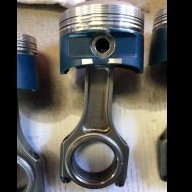Announcements
-
Similar Content
-
Latest Posts
-
I knew Andy from about then, it did some cool stuff. By 2005/2006 era, he also implemented closed loop ignition timing tuning. In 2004 it was pretty cool, being with him when he was doing automated fast self learning tuning!
-
Im No tuner but…. im running a 25det with north of 600wkw at 9000rpm e85 and water meth. G40 1150 on 32psi. Having a real built head will flow a crap ton more power but you being stuck at 7600 won’t be helping at all, throw all the boost you can and nothing will happen. Solid lifter and 9000rpm is the only way, I have built my motor 3 times, not from engine failure but more along the lines of my failures in not understanding engine parts better, basic phrase to help, “block hold power” “head make power”
-
By Murray_Calavera · Posted
What's the fuel pressure while the car is cranking? Curious, why did you replace the fuel damper? What injectors are you using, are they brand new? -
By joshuaho96 · Posted
I think it's terrible value, it should be half that price IMO. And I'm known as someone who will unironically suggest the GTIII-SS on the RB26 if you have very specific requirements. The GCG RB25DET "hybrid turbo" is 1/3rd the cost of this GTIII-RS kit and sounds like it should fit with zero modifications. Talk to Hypergear as well, maybe they can do something that fits your requirements. -
By Dose Pipe Sutututu · Posted
Should talk to Trent at Chequered Tuning about Wolf ECUs lol...
-





Recommended Posts
Create an account or sign in to comment
You need to be a member in order to leave a comment
Create an account
Sign up for a new account in our community. It's easy!
Register a new accountSign in
Already have an account? Sign in here.
Sign In Now